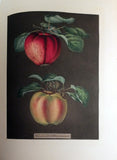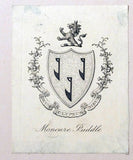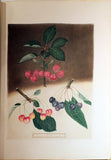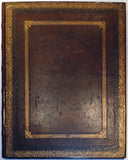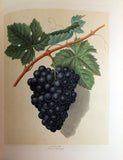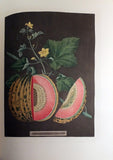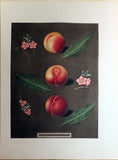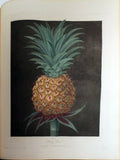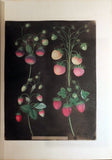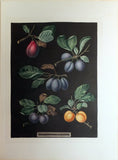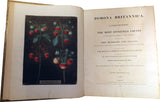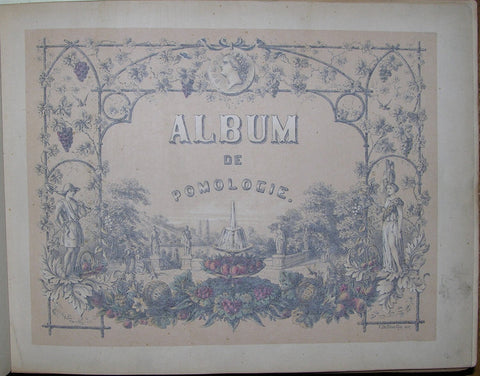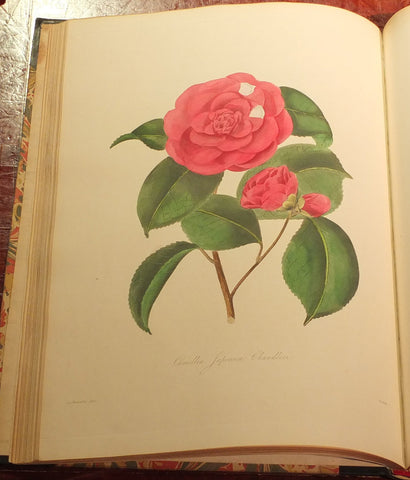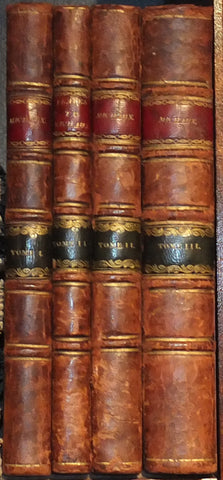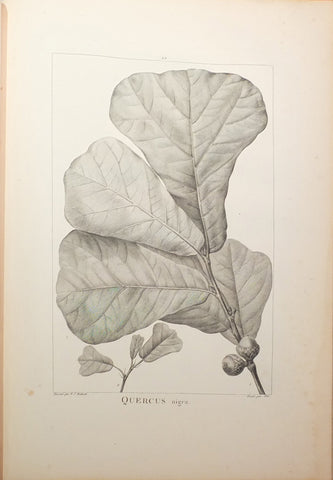George Brookshaw (1751-1823), Pomona Britannica
George Brookshaw (1751-1823)
Pomona Britannica
London: T. Bensley for the author, published by White, Cochrane and Co., E. Lloyd ... E. Lloyd andW. Lindsell, [1804]-1812 [but plates watermarked 1822]
BROOKSHAW, George (1751-1823). Pomona Britannica; or, A Collection of the Most ESteemed Fruits at present cultivated in this Country; together with the Blossoms and Leaves of such as are necessary to distinguish the various sorts from each other. Selected principally from the Royal Gardens at Hampton Court, and the remainder from the most Celebrated Gardens round London. Accurately drawn and coloured from Nature, with full descriptions of their various qualities, seasons, &c. London: T. Bensley for the author, published by White, Cochrane and Co., E. Lloyd and W. Lindsell, [1804]-1812 [but plates watermarked 1822].
Broadsheets (22 2/8 x 18 inches). With the author's printed slip explaining the absence of three pineapple plates, 1 page of index (frontispiece, title-page and dedication leaf with old vertical crease). 90 magnificent aquatints with stipple engraving by Brookshaw, printed in colors and finished by hand. Contemporary brown morocco, elaborately paneled in gilt and blind (attractively rebacked to style).
Provenance: with the engraved armorial bookplate of famous bibliophile and Philadelphian Moncure Biddle (1882-1956) on the front paste-down
Plates watermarked H.S. & S. 1822, text watermarked J.Whatman 1811. Originally published in parts between 1804 and 1812 and dedicated to the Prince Regent. Many of the specimens were taken from the Royal Gardens at Hampton Court and Kensington Gardens, among other great British gardens, and include: 256 varieties of fruit are depicted in the 90 plates, the subjects include 7 plates of Cherries; 10 of Plums or Apricots; 15 of Peaches and Nectarines; 5 of Pineapples; 17 of Grapes; 9 of Melons, 11 of Pears and 7 of Apples.
George Brookshaw's splendid "Pomona Brittanica" is a masterpiece among 19th-century British flower books. The publication of the "Pomona" marked the re-emergence of the acclaimed artist into the public eye after a total disappearance of nearly a decade. Initially a cabinet-make specializing in painted furniture decorated with borders of flowers, Brookshaw appears to have abandoned this career at about the same time as he parted company with his wife and began living with Elizabeth Stanton, and under the assumed name of G. Brown (c.1794-1804). During this time he earned a living as a teacher of flower-painting and on the proceeds of his first painting manual "A New Treatise on Flower Painting", 1797.
Characterized by the highest standards of production and artistic quality, the superb illustrations that Brookshaw drew and engraved for the "Pomona" remain perhaps the most sumptuous and distinctive of the early 19th century. This magnificent and stylistically unique work took Brookshaw nearly ten years to produce. Rivaled only by Dr. Robert Thornton's "Temple of Flora," Brookshaw's 'Pomona' is considered to be the finest British botanical work from a time when England dominated the field with a very large number of great books. Brookshaw's fine illustrations make excellent use of the rich, modulated tones that the aquatint process creates. The elegantly arranged and richly colored fruits emerge from deep brown backgrounds or float on a softly mottled light ground, creating a presence unlike that of any other botanical illustrations. Brookshaw asserts in the preface that the "Pomona Britannica" was an enduring work created for the enjoyment and edification of "succeeding generations." Nissen 244; Pritzel 1182.
We Also Recommend


